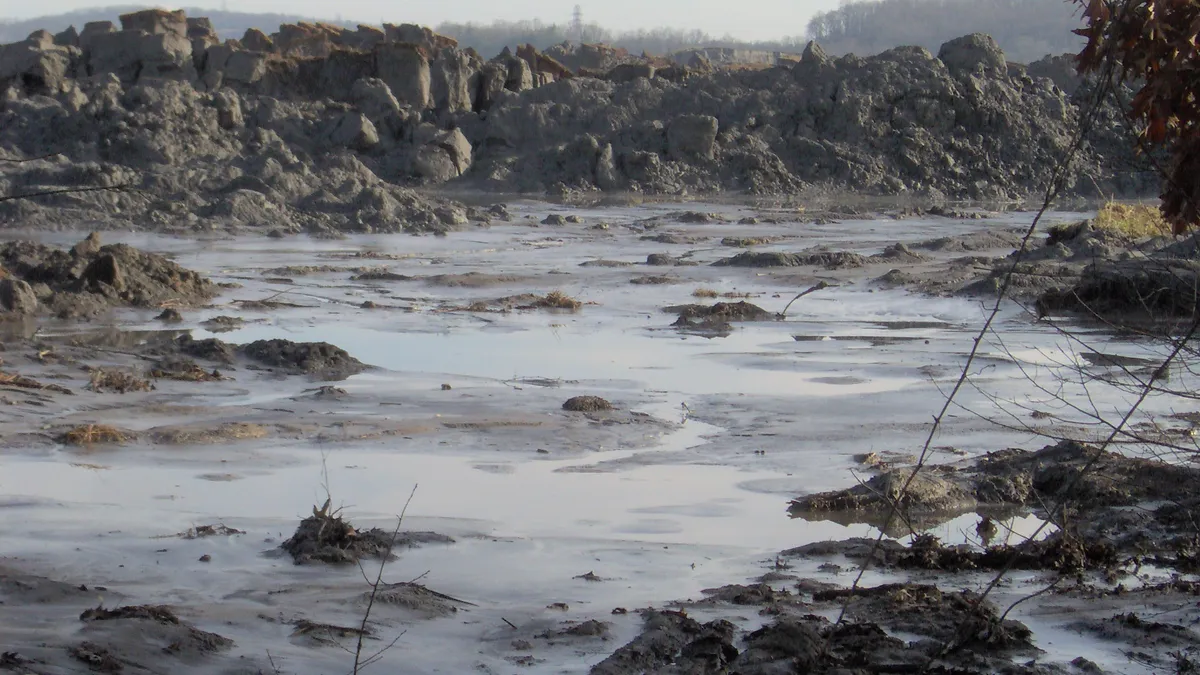Dive Brief:
- Duke Energy faces criminal charges and a $100 million fine for a 2014 spill of 39,000 tons of coal ash into North Carolina’s Dan River but environmental activists say its mishandling of coal ash waste is not atypical of the coal industry.
- There are over 1,000 ash pits and closed pits in the U.S., most in the South, Northeast and Midwest, and there have been over 200 incidents of contamination and spills, according to Earthjustice. Duke has 14 coal ash waste sites in North Carolina.
- In 2008, a Tennessee Valley Authority coal ash pit breach dumped over 1 billion gallons of sludge. A 2007 Environmental Protection Agency report documented dozens of ecological harms from coal ash, including discolored well water, spills, and deformed and contaminated fish. Selenium at Duke’s Belews Lake Steam Station eliminated 16 of 20 lake fish species.
Dive Insight:
EPA released a final ruling on handling coal ash last December but both utility industry and environmental groups were dissatisfied. It creates requirements and standards for the management of coal combustion residuals (CCRs or coal ash) under Subtitle D of the federal Resource Conservation and Recovery Act (RCRA). That subtitle governs solid waste. There is not yet adequate data, the EPA said, to justify managing coal ash under Subtitle C of RCRA, which pertains to hazardous waste.
“Coal ash is a toxic soup of heavy metals,” said NC WARN Energy Expert Nancy LaPlaca. “Pretending it is not hazardous waste is outrageous.”
Utilities are “pleased” that the EPA found it did not have adequate information to regulate coal as hazardous waste, explained Schiff, Hardin Partner/Utilities Counsel Josh More. But “EPA is pretty explicit this is not their final determination.” It failed, he added, because “it is a self-implementing program.”













